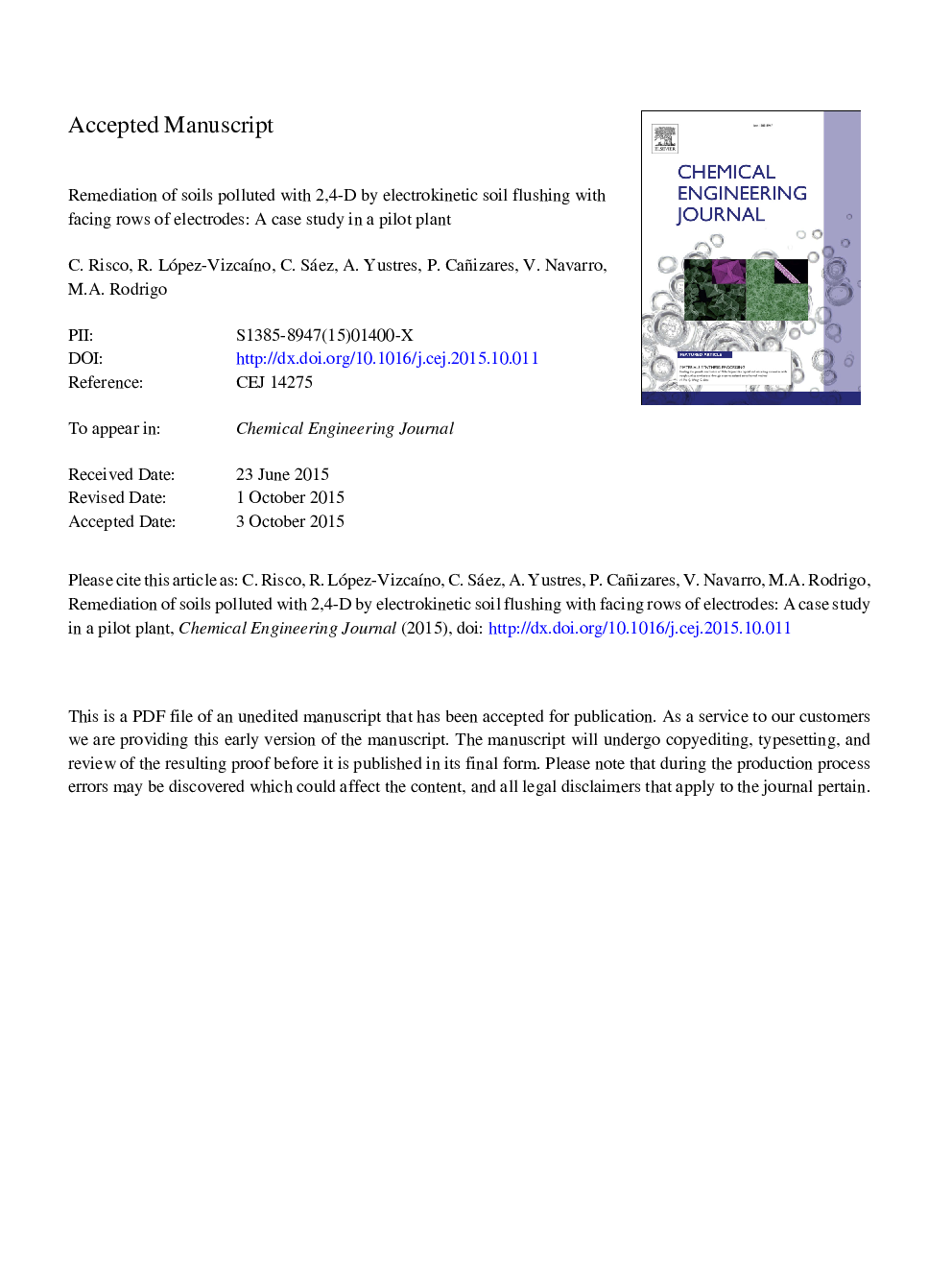| Article ID | Journal | Published Year | Pages | File Type |
|---|---|---|---|---|
| 6583086 | Chemical Engineering Journal | 2016 | 31 Pages |
Abstract
This study focuses on evaluating the application of electrokinetic soil flushing (EKSF) technologies to remediate soil polluted with 2,4-dichlorophenoxyacetic acid (2,4-D). This compound was selected as an example of polar herbicides that may cause soil percolation and groundwater contamination due to its high water solubility, lifetime and mobility. To evaluate this technology, a 40-day test was conducted on a bench-scale set-up (175Â dm3 of capacity) that was fully automated and operating under potentiostatic mode (1Â VÂ cmâ1). The electrical current, temperature, pH, humidity and pollutant concentration in the electrolyte wells were monitored daily, and at the end of the tests, a post-analysis characterization of the soil section was performed to obtain 3-D plots of the changes in each parameter. Simultaneously, a blank test was carried out (without applying an electric field) to determine spreading of the pollutant in the soil that did not experience an electric field. The results indicate that the 2,4-D is transported to the anode wells by electromigration (the primary species is an anion under the treatment pH) and the cathode wells by electroosmotic drag, even though a lower concentration is obtained because a large volume of water is mobilized. After 40Â days of the EKSF treatment, 50% of the initial 2,4-D leaked into the soil was eliminated, 25% remained in the soil, and the remaining 25% was volatilized.
Related Topics
Physical Sciences and Engineering
Chemical Engineering
Chemical Engineering (General)
Authors
C. Risco, R. López-VizcaÃno, C. Sáez, A. Yustres, P. Cañizares, V. Navarro, M.A. Rodrigo,
